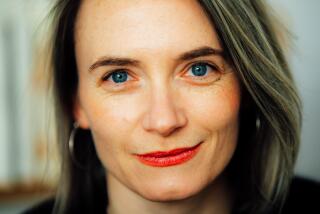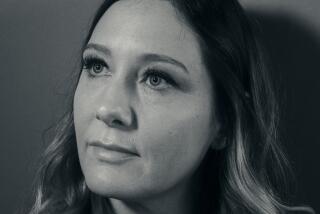Review: ‘Happy People: A Year in the Taiga’ shows culture frozen in time
Serendipity is what gives us “Happy People: A Year in the Taiga,” an intimate portrait of the vanishing breed of hunters and fishers still making a life in the isolated heart of Siberia, where a mild winter day is 30-below and the only way in or out is by helicopter or boat.
That we are given a glimpse of this extraordinary place and its people at all is due to pure chance.
Filmmaker Werner Herzog had dropped in unexpectedly on a friend in Los Angeles and found footage of Siberia playing on the plasma. It would seem Herzog stayed as much for the film as the friend, eventually watching all four hours. It led to an unusual collaboration between the creator of that footage, Russian director Dmitry Vasyukov, and Herzog, who’s become as well known for his documentaries (“Grizzly Man,” “Cave of Forgotten Dreams”) as his feature films.
Within the vast expanse of what Vasyukov had shot, Herzog saw a story. But first, he had to persuade the Russian filmmaker to trust him. That Vasyukov said yes, allowing Herzog complete control, brings us back to “Happy People,” now a tight 94-minute journey to an icy never-never land.
PHOTOS: Celebrity portraits by The Times
In a wilderness nearly as forbidding as the one Herzog captured in his Oscar-nominated look at Antarctica, “Encounters at the End of the World,” the documentary begins in spring. The great Yenisey River that snakes through Siberia is still frozen. The village of Bakhta that sits on its shores is still covered by snow. And Gennady Soloviev is still working morning to night, mostly outdoors.
Though others will move in and out of the documentary, Soloviev will anchor it. He is a trapper by trade, primarily sable pelts, and an unlikely environmentalist. But he is so at one with the Taiga, and so intent on respecting the ebb and flow of life there, that it is impossible not to be drawn into his world.
Herzog has become a master of the understatement — knowing just how long the images can sustain you without a word being said. Vasyukov and his team of cameramen gave him a stunning range to work with, so the filmmaker keeps his own narration to a minimum. Soloviev is not verbose either. But he is thoughtful — a philosopher as much as a trapper, the ice on his beard reminiscent of Dr. Zhivago as he speaks eloquently and articulately of the culture of the region, the old traditions he worries may be lost.
In Soloviev’s hands we see an ordinary ax become an instrument of art. Traps, huts, snow skies — the useful sort — emerge from felled trees with techniques handed down for generations. One of his dogs is always at his side, as critical to a hunter’s survival as a trap or a gun. There is no room for coddling here, the dogs sleep in the snow outside, they run for miles at a time, yet the bond between the animals and the man becomes its own story.
The village of Bakhta that is home to the hunters and fishermen of the Taiga is a case study in the strange ways that civilization does — and doesn’t — take hold as it intersects with indigenous people. The village remains without running water, or telephones, or medical aid for its 300 residents. Yet the men rely on snowmobiles when they head out for months at a time to trap their allotted areas. Most often it is an old wooden canoe that gets the fuel-powered monsters to the backcountry.
It is remarkable to watch those canoes first take shape as the camera turns to the story of the Kets, one of the region’s remaining ethnic tribes. They employ the same tools as their ancestors to hollow, stretch, shape and seal the boats. The Kets truly are vanishing — only around 600 are said to remain in the entire country. They share the wilderness with Russians like Soloviev, but they keep even more to the old ways. Wooden dolls are their talisman, alcohol their downfall. Nikolay Nikiforovitch Siniaev takes us into their world, which still relies on fishing the ice-encrusted Yenisey River, bringing with it some remarkable underwater footage.
But it is the vast snowy expanses the film returns to again and again as spring turns briefly to summer, then autumn and finally the long hard stretch of winter sets in. Life in the Taiga is harsh, but for people like Soloviev, it is a rich and satisfying life. When he heard Herzog’s shorter version would be shown around the world, he asked the director to make sure that no one pities their poverty, that we know the people of Bakhta are happy.
--------------------------------
‘Happy People: A Year in the Taiga’
Not rated
Running time: 1 hour, 34 minutes; English and Russian with English subtitles
Playing: Nuart Theatre, Los Angeles
PHOTOS AND MORE
VIDEO: The making of ‘Argo,’ ‘Les Miz’ and more
ENVELOPE: The latest awards buzz
PHOTOS: NC-17 movies: Ratings explained
More to Read
Only good movies
Get the Indie Focus newsletter, Mark Olsen's weekly guide to the world of cinema.
You may occasionally receive promotional content from the Los Angeles Times.











